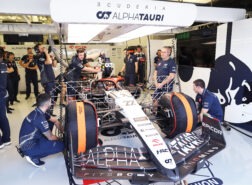Fuel rig
A fuel rig is an essential piece of equipment used in Formula 1 racing to refuel the cars during pit stops. The fuel rig is a highly specialised piece of equipment designed to transfer large amounts of fuel into the car's fuel tank as quickly and efficiently as possible.
The fuel rig typically consists of a number of components, including a fuel tank, a fuel pump, fuel hoses, and various valves and connectors. The fuel tank is usually made of a lightweight material such as aluminium or carbon fibre, and is designed to hold a large amount of fuel. The fuel pump is responsible for pumping the fuel from the tank to the car's fuel tank, and is typically powered by compressed air or an electric motor.
The fuel hoses used in a fuel rig are specially designed to handle the high pressures and temperatures associated with transferring large volumes of fuel. They are typically made of a high-strength material such as Kevlar or braided steel, and are reinforced with multiple layers of insulation to prevent heat transfer and reduce the risk of fire.
In addition to the fuel tank, pump, and hoses, a fuel rig may also include a number of valves and connectors designed to regulate the flow of fuel and prevent spills or leaks. These components may include quick-release connectors, safety valves, and flow regulators.
Fuel rigs are a critical component of Formula 1 racing, as they allow teams to quickly refuel their cars during pit stops and stay competitive throughout the race. The use of fuel rigs is tightly regulated by the FIA, with strict safety protocols in place to prevent accidents and ensure the safe handling of fuel.
In recent years, Formula 1 has moved away from refuelling during races, with teams now required to start each race with a full tank of fuel. However, fuel rigs remain an important part of the sport, and are used extensively during testing and practice sessions.












LAST 3 F1 Fan COMMENTS